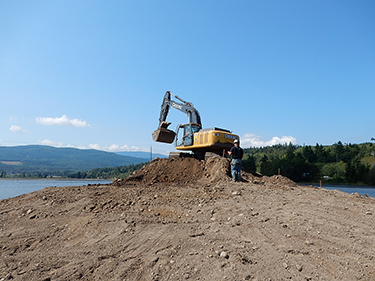|
Subscribe / Renew |
|
|
Contact Us |
|
| ► Subscribe to our Free Weekly Newsletter | |
| home | Welcome, sign in or click here to subscribe. | login |
Environment
| |
 |
September 25, 2014
Survey: Environmental Sciences Associates
Specialty: SEPA and NEPA compliance, natural resource evaluation, water resource management, policy and planning work
Management (local): Lloyd Skinner, Pacific Northwest regional director; Molly Adolfson, Pacific Northwest water leader
Founded: 1969
Headquarters: San Francisco; local offices in Seattle and Portland
2014 revenues (local): $10 million
Projected 2015 revenues (local): $12 million
Projects: Denny Substation EIS for Seattle City Light; Maynard nearshore restoration, Jefferson County; Alaskan Way Viaduct replacement (cultural resources monitoring, site testing, assistance with tunnel boring machine retrieval)
Molly Adolfson is a senior vice president at Environmental Science Associates and its Pacific Northwest water leader. Here’s what she had to say about her work:
Q: What sort of projects have been keeping you busy?
A: Our cultural resources group has been very busy with some major monitoring projects this year, including the SR 530 (Oso landslide) debris removal project, the Alaskan Way Viaduct project, and a large combined sewer overflow project in South Magnolia for King County Wastewater Treatment Division.
We’ve also been working on a number of beach restoration projects in Puget Sound and leading some major EISs, including NEPA EISs for the Bureau of Reclamation in Eastern Washington, a large SEPA EIS for a new Denny Substation in South Lake Union, and a programmatic SEPA EIS for Seattle Public Utilities’ combined sewer overflow long-term control plan.
Our recent merger with Vigil-Agrimis in Portland has dramatically expanded our capabilities in restoration and stormwater management.
Q: What are a few changes you’ve noticed in the industry?
A: There has been a tremendous amount of consolidation in the consulting industry, with firms generally getting larger and larger. Small- to medium-sized firms like ours are getting increasingly scarce.
We’ve also seen increasing pressure on our billing rates, and overall pressure on budgets, to do more for less.
Technological advances have really changed how we do our work, with GIS at the forefront. And we are finding that nearly all of our projects require a multidisciplinary team, with planners, biologists, engineers and cultural resource specialists working hand-in-hand from the planning stages through construction and monitoring.
Q: How has the availability of public funds affected your company?
A: We’ve been a bit more cautious about hiring, as we’ve seen a number of public projects go on hold or move at a slower pace, particularly transportation projects. Our public sector clients have really been feeling the squeeze due to internal budget cuts or restrictions, and projects can take longer to move through the system, either through the contracting process, or review process for permits, internal review documents, etc. We are seeing things start to pick up, however, and we have been hiring recently.
Q: Where are the biggest opportunities for growth?
A: Right now we are looking at tremendous opportunities for integrated planning services (land use, climate change adaptation, and restoration), cultural resource evaluation and monitoring, and construction support services. Our roots in SEPA and NEPA will continue to be bread-and-butter work for us as the Puget Sound region continues to boom.
Q: If you could pass any law tomorrow what would it be?
A: I’d like to see a law that ensures a robust, sustainable funding mechanism for education — from preschool to university.
Other Stories:
- Passive House finds a permanent home in the Northwest
- Survey: Landau Associates
- Survey: HWA GeoSciences
- Survey: Eco Chemical
- Survey: Environmental Resources Management
- Survey: WISErg Corp.
- Survey: Farallon Consulting
- These modular classrooms are not old school
- Local firms invent modules to protect Louisiana coast
- Old mining pond becomes new salmon habitat
- Time to jump on contaminated urban properties?
- Tackling toxics with green chemistry
- How biosolids can curb greenhouse gases
- Lower Duwamish: watershed management poster child?
- Is hard water drowning Eastern Washington’s economy?
- Preserving Seattle’s largest forest takes a group effort
- Being green is not just about checking boxes
- Carbon-rich tidal wetlands down, but not out
- Survey: Herrera Environmental Consultants



